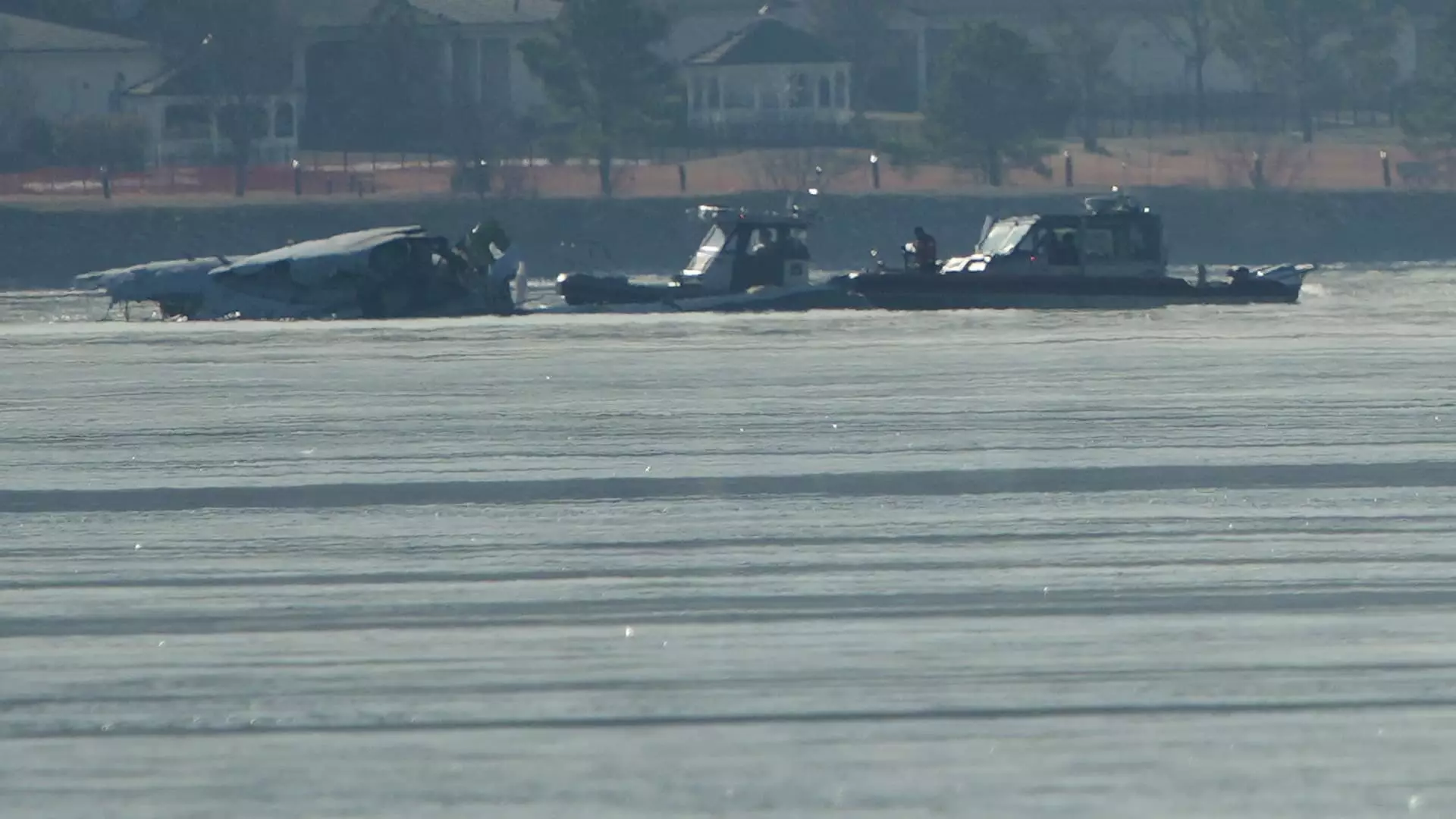On a fateful Wednesday night, tragedy struck above the Potomac River when an American Airlines regional jet collided with a military Black Hawk helicopter. This incident is now identified as the deadliest commercial air disaster in the United States since 2001, claiming the lives of all individuals on board both the Bombardier CRJ700, carrying 60 passengers and four crew members, and the Army helicopter, which had three personnel aboard. As the grim process of recovering bodies unfolded on Thursday, it became clear that this catastrophe was not just an isolated incident, but a significant flashpoint in an ongoing crisis related to air traffic congestion.
While the specifics of the collision remain under investigation—an inquiry that could stretch for many months—there are troubling signs that reveal long-standing flaws in the airspace management system. A number of critical incidents, including a near-miss involving a JetBlue Airways flight in April at the same airport, illustrate a growing trend of close calls that have alarmed aviators and regulators alike. Although immediate culpability for the crash has not been assigned to air traffic control, the occurrence has ignited a broader discussion about the efficacy of air traffic operations in the United States, especially at high-stakes venues like Reagan National Airport, which boasts the busiest runway in the nation.
Since February 2009, the American aviation industry has not seen a major fatal crash, leading many industry leaders to assert that the overall system has never been safer. Bob Jordan, CEO of Southwest Airlines, emphasized this sentiment during an interview, stating that the aviation framework enjoys a level of safety unheard of in previous decades. However, juxtaposed against this assurance is the stark reality of Wednesday’s disaster, which starkly contrasts the narrative of continuous improvement in aviation safety.
Jordan’s calls for modernization resonate with the overwhelming need for enhancements in our air traffic control infrastructure. Experts contend that the systems in place have remained largely unchanged for too long, leading to increased congestion in some of the nation’s busiest corridors. The public must grasp the implications of this situation; while the airlines tout safety successes, the underlying operational environment appears increasingly at risk, highlighted by the near-misses and tragic collisions that punctuate a troubling trajectory.
As the investigation progresses, it is essential for aviation authorities to confront the pressing calls from industry stakeholders for renewal and investment in the air traffic control framework. Implementing modern technological solutions is not merely a suggestion—it has become a necessity to ensure the safety of passengers in the sky. The crash serves as a crucial reminder of the fragility of air travel safety and the potential consequences of neglecting infrastructure improvements.
This tragic episode may ultimately be the catalyst required to galvanize action, propelling reforms that could save countless lives in the future. As the nation reflects on this calamity, the essential lesson remains: enhancing safety protocols and modernizing air traffic systems are not just administrative objectives, but uncompromising imperatives that require immediate and sustained attention.

